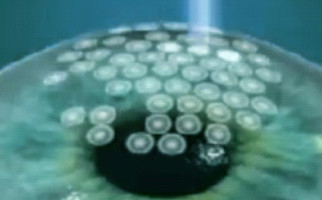PRK method
What exactly is PRK (Photo Refractive Keratectomy) technique?
PRK refractive technique, also known as Photorefractive Keratectomy, is one of the first techniques that applied in refractive surgery field. In PRK there is no any corneal flap formation, as in LASIK (assisted by a mechanical microkeratome or a femtosecond laser technology).
Initially, anesthetic drops are used for each eye, followed by a rapid removal of the upper corneal layer (epithelium). What follows is a detailed corneal reshaping with the help of a flying spot excimer laser. Human body is able to reconstruct the corneal epithelium in between 4 and 10 days. However, PRK method is more painful than LASIK (tingling, pain,discomfort during the next 24 hours) and full vision recovery and restoration (visual acuity) may be achieved in a few weeks. So patient’s cooperation and patience are essential. However, PRK technique is extremely safe and offers results of great accuracy. The whole process takes only 20 minutes for the both eyes.
Usually photorefractive keratectomy (PRK), is selected when corneal thickness, according to topography and pachymetry is insufficient to create the flap (corneal flap – LASIK) or when epithelial defects and scars.
It is worth mentioning that a therapeutic, soft contact lens without correction is applied to each eye, at the end of the refractive procedure, for 3 to 5 days. Such a lens (like a bandage) helps catalytically in healing of the epithelium. Every PRK patient is monitored at regular intervals (postoperative follow-up) until full vision restoration and stabilization. Eye drops are prescribed for a time period of about 3-4 months.













